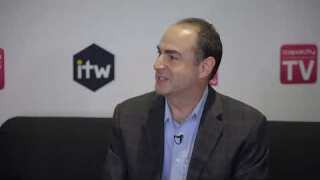How is Telxius evolving in the face of changing connectivity needs across the Americas and Europe?
We’re working to be the global connectivity provider of choice by offering a best-in-class infrastructure portfolio, including subsea cables, terrestrial backhaul and data centres.
We announced in 2023 that we would be rolling out a new subsea cable to address communications demands, Tikal, as well as joining Google’s Firmina cable between the eastern US and Argentina. Tikal will be the highest-capacity undersea cable to connect Guatemala with the US and will have an additional landing in Cancun [Mexico], and possibly Barranquilla [Colombia].
Customers will benefit from three redundant routes between the US and Brazil – Firmina, Brusa and SAm-1 – and three to Argentina – Firmina, Tannat and SAm-1. We have also recently extended SAm-1 between Punta Cana in the Dominican Republic to Puerto Rico, to accelerate Caribbean connectivity. These together provide robust, low-latency connectivity spanning the Americas, while increasing international connectivity and opening new opportunities for businesses.
What other measures has the company taken to strengthen its networks?
We also recently collaborated with Arelion to provide diverse, multi-terabit connectivity into the Telxius landing stations in Boca Raton and Jacksonville, Florida, via Arelion points-of-presence [PoPs]. This benefits Arelion and Telxius customers across the Americas through enhanced access to the companies’ global internet backbones.
Speaking of connectivity demands, we’re seeing a surge in our Global Carrier Ethernet solution, which provides ultra-low-latency connectivity and high-speed bandwidth to PoPs across Europe and the Americas. It’s a flexible, granular, MEF-certified service offering connections of up to 100Gbps-plus, backed by our submarine infrastructure and 100% redundant global network.
What role do the data centres owned by Telxius play in shaping the global connectivity landscape?
Our extensive infrastructure ecosystem includes eight next-generation fibre-optic submarine cables, as well as terrestrial backhaul networks. Together these span over 100,000km. We also have almost 100 PoPs in 17 countries, plus 27 data centres.
We’re seeing a rise in demand for our carrier-neutral colocation services, which are available in our data centres across 10 countries. With these, customers gain secure, efficient and reliable housing for equipment, plus connectivity to our tier-1 network, enabling interconnection with millions of customers globally.
We’re expanding some of our most in-demand locations, such as Virginia Beach [US], Derio [Spain], Lurin [Peru], and Santos and Rio de Janeiro [Brazil]. We are proud that our efforts are being recognised, with our Derio data centre recently awarded for Excellence in Global Connectivity at the Data Center Market Awards.
Our data centres offer a one-stop shop for IP, capacity, colocation and security services, unleashing the full potential of our subsea cables by connecting them to key global hubs. We’re developing new data centres to add to our network, bringing more opportunities to customers worldwide.
How does the company’s European backbone play a crucial role in facilitating connections between the Americas and Europe?
Multiple Telxius network routes channel data from the US and Latin America towards our transatlantic cables, Marea and Dunant, which push this traffic across the ocean to our Derio data centre in Spain.
From here, our widespread European backhaul network connects customers to the main data centres across the region, including London, Paris, Amsterdam, Madrid, Frankfurt, Marseille and Barcelona.
We also have an extensive backhaul network in the US, connecting Ashburn, Miami, New York, Dallas, Richmond, Phoenix, Jacksonville, Laredo, McAllen and Myrtle Beach, among others. These terrestrial routes provide fast, secure, redundant and resilient connectivity, helping to optimise the user experience.
Building on the developments made in 2023, how does Telxius plan to sustain its leadership as a global connectivity provider?
We are focused on the long-term success of our customers, no matter how their needs change and evolve. To meet these demands, we keep a close eye on the market to ensure we’re growing our network in the right locations globally.
Colombia, for example, has a fantastic geographical position, with two coasts next to the Caribbean Sea and Pacific Ocean, making it an ideal connection point. We’re therefore considering the extension of Tikal to Barranquilla, alongside other exciting network developments.
Digitalisation is accelerating and digital economies are growing, with our infrastructure in the US, Latin America and Europe designed to evolve at the speed of these changing requirements. We’re seamlessly connecting the world’s digital hubs with new levels of reliability, security and efficiency.





